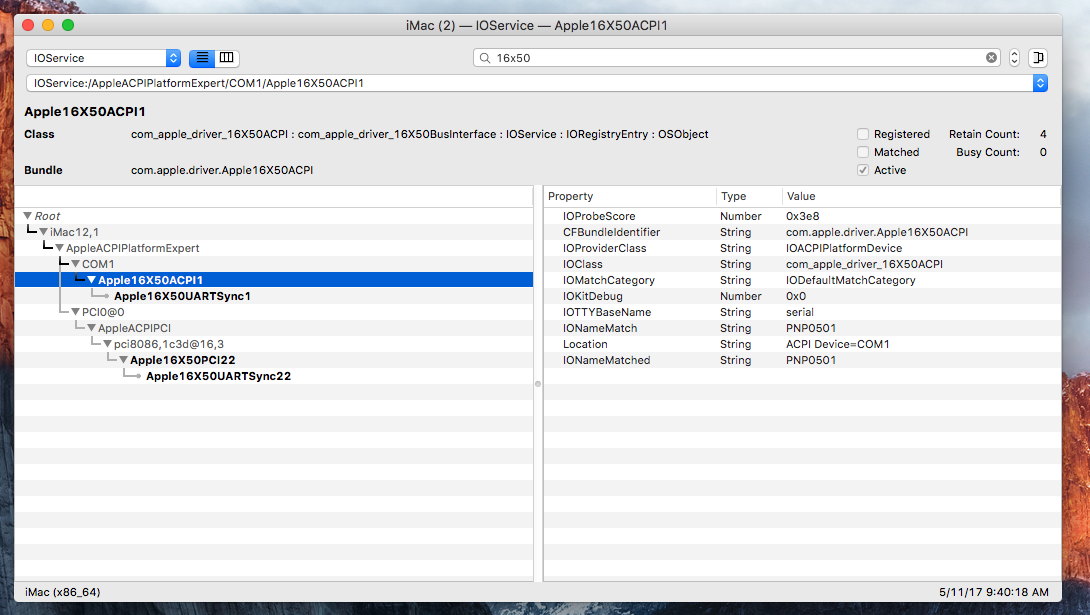- Joined
- Feb 5, 2011
- Messages
- 74
- Motherboard
- Dell Optiplex 990 SFF D6H9T
- CPU
- Intel Core i3-2120
- Graphics
- EVGA Nvidia GT 610
- Mac
- Mobile Phone
I tested macOS Sierra. There is no panic with no changes in BIOS (leave Super IO enabled), and with no removing or adding or patching of kexts required. The serial port just works. It's only El Capitan (and probably earlier Mac OS X versions) that need a workaround.
I have a Dell Optiplex 990 SFF that comes with a serial port built in. There are no issues that I am aware of with it enabled, and I am running El Capitan (10.11.6). I only briefly looked at the Apple16X50ACPI and IOBluetoothHostControllerUARTTransport kexts so this post may be complete non-sense. That said, the changes in how USB is handled (in some cases, requiring renaming EHC1 to EH01 for example) lead me to see if perhaps the bluetooth controller was also matching on the name. My device is attached as \_SB.PCI0.LPCB.COM1 (different from your UAR1) and I have the OS strings in my DSDT binding "Darwin" to "Windows 2009" to enable the ACPI devices for OS X. Alas, my brief "grep" session lead me nowhere. Anyway, I just wanted to share that I have no issues at all with my serial port and I have not done anything special (other than to enable the serial port as COM1 in bios). If you need any more info, just ask.



